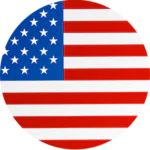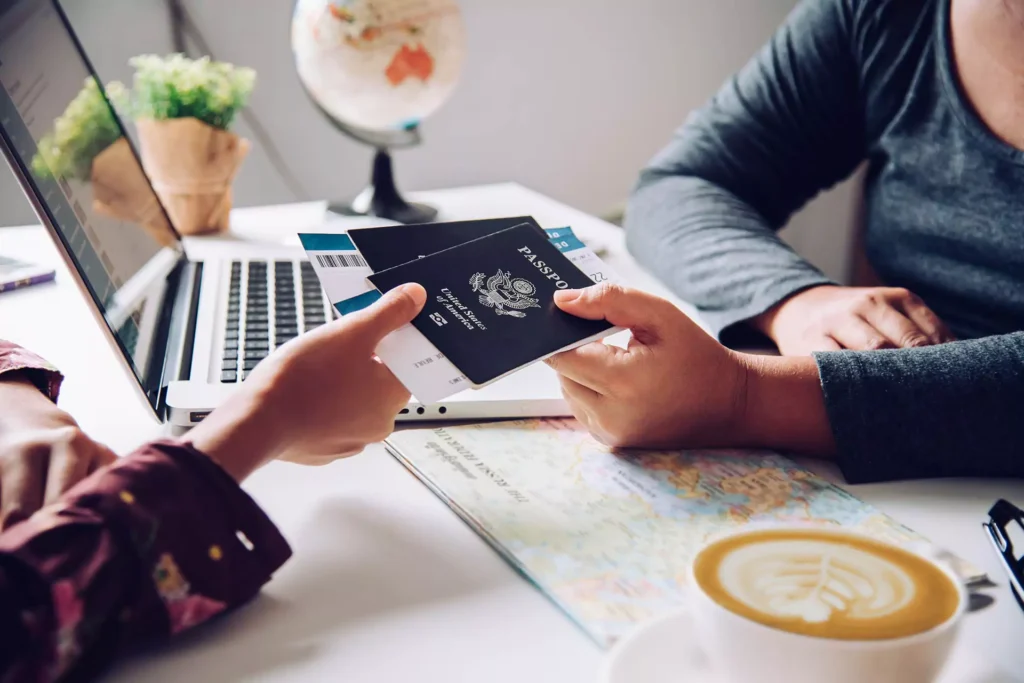
Unlock Your Path to Academic Excellence!
The US student visa process may seem complex, but with the right information and guidance, it can be much easier to navigate. In this comprehensive guide, we will walk you through everything you need to know about studying in the United States, including visa types, application steps, document requirements, and how NRIoverseas can help you throughout the process.
Why Study in the USA?
The United States is home to some of the world’s most prestigious universities, offering a vast range of academic programs and cultural experiences. Moreover, the USA is a melting pot of cultures, making it a diverse and inclusive environment for international students. Whether you aim to pursue undergraduate, graduate, or vocational studies, the US offers the ideal platform for personal and professional growth.
Documents
When applying for a US student visa, it’s essential to gather all the necessary documents to avoid delays or denials.
- Valid passport
- Non-immigrant visa application (DS-160 confirmation)
- Passport-size photographs (as per US visa photo requirements)
- Form I-20 or DS-2019 (provided by your institution)
- SEVIS fee payment receipt
- Visa application fee payment receipt
- Academic transcripts and diplomas
- Standardized test scores (TOEFL, IELTS, GRE, GMAT, etc.)
- Proof of financial support. this can include a bank statement or if any scholarship is there
- Health and vaccination records (if applicable)
US Student Visa Fees
The fees for US student visas can vary depending on the type of visa and other factors.
- SEVIS Fee: $350 for F and M visas, $220 for J visas.
- Visa Application (MRV) Fee: $160 for all non-immigrant visas.
For J visa holders, an additional program fee may apply based on the nature of the exchange program.
Dream Tour
Explore
The World
Quick Contact
Simplify Your Journey to Success!
Securing a US student visa involves multiple steps. Here’s a breakdown of the application process to help you prepare

Step 2: Pay the SEVIS Fee

Step 5: Schedule Visa Appointments
Find the Right Fit for Your Academic Dreams!
The US government offers three primary types of student visas, each catering to different academic programs and purposes. Understanding which visa suits your educational goals is crucial before starting the application process.

F Student Visa
The F visa category is the most common type of student visa. It is intended for international students who are enrolling in an academic program or English language course at a US institution. If you are planning to study full-time at a college, university, or secondary school accredited by the US Department of Education, you will need an F-1 visa. For spouses and children of F-1 visa holders, the F-2 visa is available, allowing them to accompany the primary visa holder but not to work or engage in full-time study unless they secure their own visa.
Key points about the F-1 visa include:
– Students must be enrolled in a full-time program.
– The visa allows part-time work on campus (up to 20 hours per week) during the academic year and full-time during holidays.
– Optional Practical Training (OPT) is available, allowing students to work in their field of study for up to one year after graduation, with an extension for STEM graduates.

J Exchange Visitor Visa
This visa category covers a wide range of participants, including those involved in research, teaching, or undergoing training programs. The J-1 visa is commonly used for short-term academic programs, research fellowships, and cultural exchange initiatives. Participants are sponsored by US-based organizations, academic institutions, or government agencies.
Some important aspects of the J-1 visa:
– Dependents of J-1 visa holders (J-2 visa) may accompany the primary visa holder and, in some cases, are allowed to work.

M Student Visa
The M visa is specifically for students attending vocational or non-academic training programs, such as technical courses, flight schools, or other trade-related education. The M-1 visa is granted for a fixed period, and extensions are typically not allowed beyond the initial time granted.
Key points about the M-1 visa:
– Students must show financial proof of how they are financing their study.
– M-1 visa holders are not allowed to work while in the US.
– Unlike the F-1 visa, M-1 visa holders cannot change their visa status to other categories (such as F-1) while in the US.
Can Students Work on a US Student Visa?
While off-campus work is generally prohibited in the first year, F-1 students are allowed to work part-time (up to 20 hours per week) on campus. After the first year, F-1 students may be eligible for off-campus employment through programs like Optional Practical Training (OPT) or Curricular Practical Training (CPT).
Frequently Asked Questions ?
What is an F-1 visa?
An F-1 visa is a non-immigrant visa for international students who wish to pursue full-time academic studies at an accredited US institution, such as a college, university, or language school. This visa allows students to stay in the US for the duration of their studies and provides limited work opportunities, such as on-campus employment and Optional Practical Training (OPT) after graduation.
How a US student visa can be applied?
To apply for a US student visa, first, you must be accepted by a SEVP-approved institution and receive a Form I-20 (F or M visa) or DS-2019 (J visa). Next, pay the SEVIS fee, complete the DS-160 visa application form, and schedule appointments for biometrics and an interview at a US Embassy or Consulate. During the interview, present all necessary documents, such as your Form I-20/DS-2019, SEVIS receipt, financial statements, and academic records.
List the documents needed for applying for a US student visa.
– A valid passport
– Form I-20 or DS-2019 from your US school
– Confirmation of the DS-160 visa application
– Payment receipts for SEVIS and visa application fees
– Academic transcripts, test scores (like TOEFL, IELTS, GRE), and financial proof to demonstrate sufficient funds for your stay
Can I work while studying on a US student visa?
Yes, but with limitations. F-1 visa holders can work part-time (up to 20 hours per week) on campus during the academic year and full-time during holidays. After the first academic year, F-1 students may apply for off-campus work through programs like Optional Practical Training (OPT) or Curricular Practical Training (CPT). J-1 students can work with sponsor approval, while M-1 visa holders are not permitted to work during their studies.
List US student visa types.
– F-1 Visa: For full-time academic studies.
– J-1 Visa: short-term academic and research opportunities.
– M-1 Visa: For students enrolling in vocational or non-academic programs.
Confidence, Preparation, Success!
The visa interview can feel intimidating, but proper preparation can improve your chances of success.
- Be clear about your study goals and why you chose the US.
- Have a solid plan to demonstrate your financial stability.
- Provide evidence of ties to your home country, showing you intend to return after completing your studies.
- speak honestly and confidently.
How NRIoverseas Can Help You Obtain a US Student Visa
Navigating the US student visa process can be challenging, but NRIoverseas is here to help. Our experienced consultants provide personalized guidance, from helping you choose the right visa type to assisting with document preparation and interview coaching.
We ensure that every step of the application process is handled efficiently, minimizing the chances of errors or delays. Whether you need assistance with financial documentation, filling out forms, or preparing for your visa interview, NRIoverseas offers the support you need to achieve your academic dreams in the United States.



 Whatsapp Now
Whatsapp Now